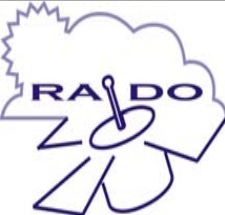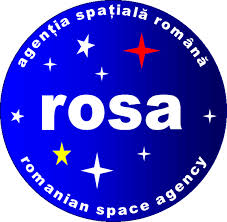Atmosphere Optics, Spectroscopy and Lasers Laboratory LOA-SL
|
Synthesis and characterization of polymer/cobalt ferrite based magnetic nanocomposites
Magnetic materials have attracted significant attention in the last few decades due to their interesting properties and technological significance in developing new systems and improving the performances of existing materials. Among these, ferrites are considered to be an important class of materials which are used extensively in magnetic data storage, sensors, actuators, wave guides etc. Moreover, the applicability domain of the spinel ferrites can be extended when relating to nanostructured forms such as thin films and nanoparticles. However the main problem is preserving the ferromagnetic characteristic of these structures considering that as their dimensions are decreased the nanoparticles can turn to a paramagnetic state with zero coercivity and zero magnetization. Pulsed laser ablation is a method that can ensure the formation of thin films with specific properties but also the synthesis of nano-sized particles with crystalline structure, no segregations and/or agglomerations and large magnetic response. One objective of this project is to study the influence of the laser fluency and wavelength and the influence of the type of the liquid solution on the structural and magnetic properties of the cobalt ferrite nanoparticles obtained by laser ablation. Moreover, the combination of cobalt ferrite (both in thin film and nano-powder forms) with polymer materials can account for significant advances in different technological areas such as flexible electronics, MRI imaging and drug delivery, microwave frequency transducers multiple state memory elements, highly transparent magneto-optic materials, magnetic field sensors etc. Another research direction in this project is to study the structural, optical and magnetic properties of nanocomposites based on cobalt ferrite – polymer combination. With this aim, two approaches will be considered: one is to obtained polymer thin film with uniformly distributed cobalt ferrite nanoparticle inclusions and the second one is to deposit multilayer structures by laser ablation technique. This study can offer information on how to obtain cobalt ferrite nano-sized crystalline particles with improved magnetic response by laser ablation. Very few papers offer information on this research area and this fact underlines the need of this study. The use of polymers as host materials for magnetic nanoparticles ensures a uniform dispersion, adjustable magnetic response and development of low-loss magneto-dielectric systems. There are already published results that show promising properties of ferrite embedded polymers (transparency vs magnetic response, flexibility, magnetoelectric behavior). However, the multiple possibilities in configuring the structure of these nanocomposites offer new research paths such as those proposed in this project (multilayered structures, nano-columnar systems)
Main objectives:
Identification of optimum experimental conditions for the synthesis of crystalline nanoparticles of cobalt ferrite with improved magnetic properties: influence of energy and laser wavelength, liquid solution in which the laser ablation takes place.
Results:
Conference participations:
1. Studiul nanoparticulelor de ferită de cobalt obținute prin ablație laser în lichid, Francisca Husanu, Georgiana Bulai, Mariana Pinteala, Cristian Focsa, Silviu Gurlui, Conferinta Fizica şi Tehnologiile Educaţionale Moderne, 15-16 Mai 2015 Iaşi, Romania; 2. Structural and magnetic properties of cobalt ferrite nanoparticles obtained by laser ablation în liquid, Georgiana Bulai, Adrian Fifere, Ioan Dumitru, Mariana Pinteala, Cristian Focsa, Silviu Gurlui, International Conference on Magnetism, 5-10 iulie 2015 Barcelona, Spania. 3. Structural and magnetic properties of ferrite nanoparticles generated by laser ablation in liquid, G. Bulai, B. C. Hodoroaba, M. Pinteala, C. Focsa, S. Gurlui, International Conference on Extreme Light (ICEL), 23- 27 noiembrie 2015, Bucuresti, Romania
ISI indexed papers:
1. Pure and rare earth doped cobalt ferrite laser ablation: Space and time resolved optical emission spectroscopy, G. Bulai, S. Gurlui, O. F. Caltun, C. Focsa, Digest Journal of Nanomaterials and Biostructures, 10 (2015) pp.: 1043-1053; 2. Magnetic nanoparticles generated by laser ablation in liquid, Georgiana Bulai, Ioan Dumitru, Mariana Pinteala, Cristian Focsa, Silviu Gurlui, Submitted to Journal of Laser Micro/Nanoengineering. 3. Influence of combustion agents and thermal treatment on synthesis process of iron manganese oxides for sensor applications, E. V. Gafton, A. I. Borhan, G. A. Bulai, A. R. Iordan, M. N. Palamaru, F. Tudorache, I. Petrila, V. Nica, I. Dumitru, O. F. Caltun, submitted to Materials Chemistry and Physics. |




